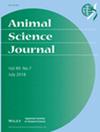Re-Vitrification at the Pronuclear and Blastocyst Stage of Porcine Embryos Obtained From Vitrified Immature Oocytes
Abstract
The aims of this study were to investigate the effects of re-vitrification at the pronuclear (PN) stage of porcine embryos generated from vitrified oocytes on subsequent development and to clarify if re-vitrification is more feasible at the PN stage or at the blastocyst stage. Immature porcine oocytes at the germinal vesicle (GV) stage were vitrified/warmed and subjected to in vitro maturation, parthenogenetic activation (PA), and embryo culture. Subsequent parthenotes were either cultured without re-vitrification for 6 days (GV-vit group) or were re-vitrified 8 h after PA at the PN stage (GV-vit/PN-revit group), and after warming, cultured for 6 days. Embryo development to the blastocyst stage was compared with a control group processed without vitrification at any stage. Then, blastocysts obtained in each group were vitrified/warmed and their survival was assessed. Blastocyst formation in the GV-vit/PN-revit group decreased dramatically (p < 0.05) compared with the GV-vit and control groups (3.4% vs. 10.2% and 22.4%, respectively). However, 80.0% of the blastocysts in the GV-vit group survived re-vitrification. Hence, after blastocyst re-vitrification, 8.2% of the vitrified oocytes re-expanded to transferable embryos. In conclusion, re-vitrification at the PN stage was detrimental for subsequent development, whereas that at the blastocyst stage was more advantageous.

 求助内容:
求助内容: 应助结果提醒方式:
应助结果提醒方式:


